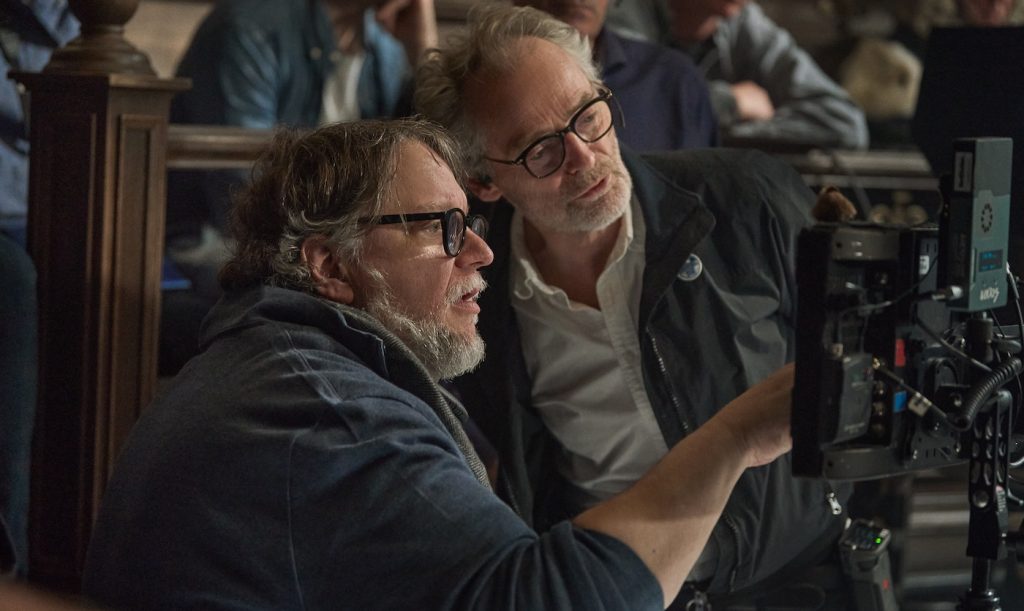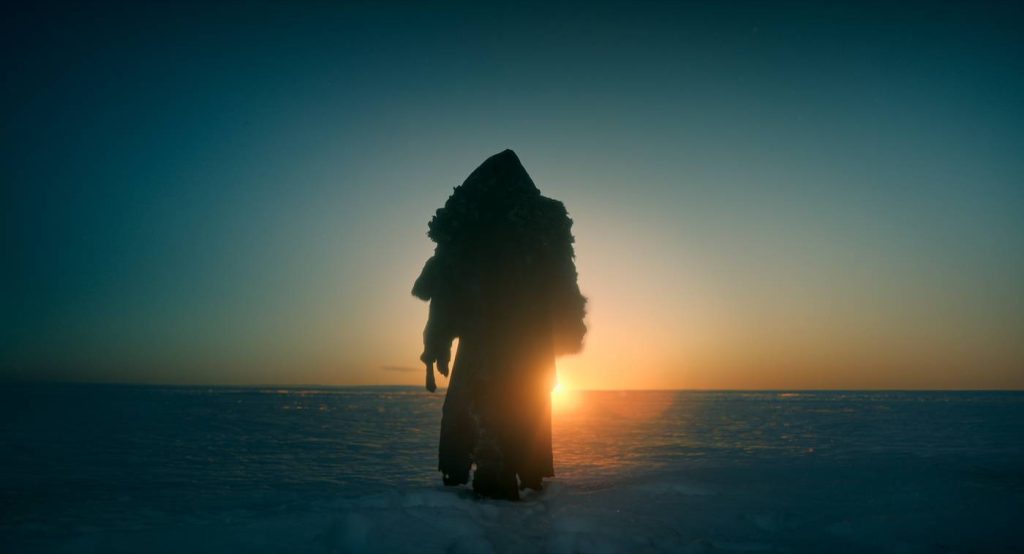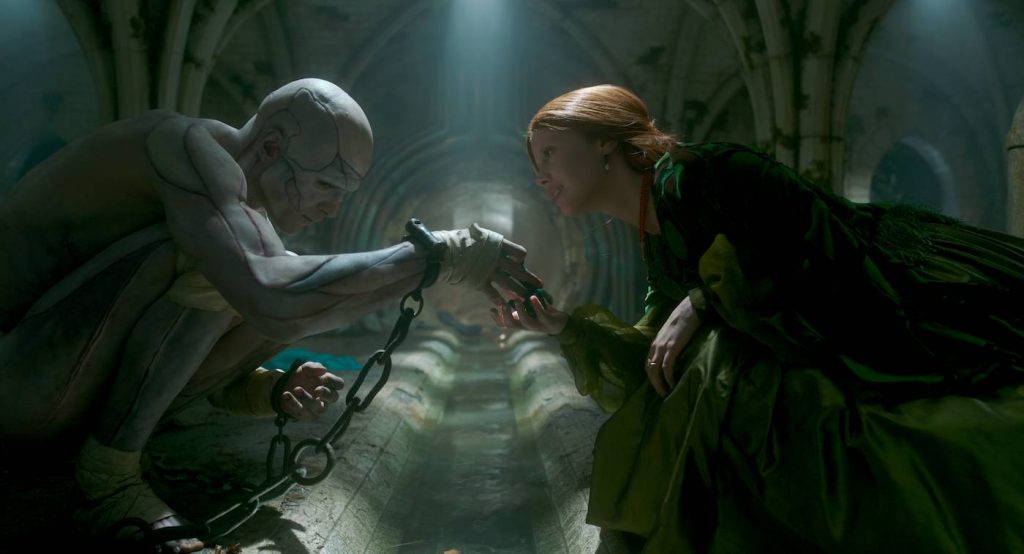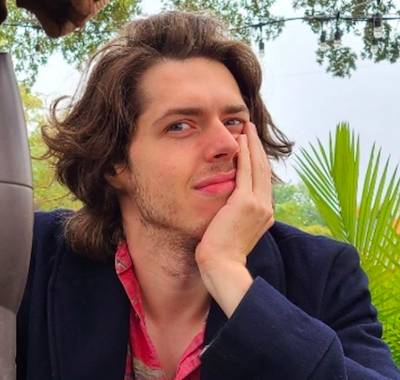Bringing Guillermo del Toro’s Creature Into the Light With “Frankenstein” Cinematographer Dan Laustsen
Dan Laustsen likes to make even the most fantastical frame pop with an authentic, organic humanity. The cinematographer extraordinaire and filmmaker Guillermo del Toro wants tangibility, regardless of whether his stories are as slippery and bittersweet as The Shape of Water or as beguiling and deceptive as Nightmare Alley. In the case of Frankenstein, organic is a more-than-fitting approach for the story of men and the monsters within, and a creature born from obsession and ambition but who possesses something his creator sorely lacks—compassion.
In del Toro’s adaptation of Mary Shelley’s classic horror novel, the filmmaker is true to the adventurous spirit of the book. The world is big and lush and full of life, but Victor Frankenstein (Oscar Isaac) is obsessed with mastering death. To defy the laws of nature, the mad scientist creates a son of sorts from the dead, picking apart fallen soldiers from the Crimean War, and what he fashions from their spare parts is The Creature (Jacob Elordi), unlike any version of the iconic monster we’ve seen in previous adaptations. Victor eventually abandons his creation, who seeks revenge in Edinburgh and beyond, with their adventure leading all the way to the Arctic.
From snowy landscapes to thunderous nights in Edinburgh, del Toro and Laustsen paint vivid portraits of ego run amok and a lost soul searching for identity. The cinematographer spoke with The Credits about how they embrace color and darkness, and, even in the wildest tales, paints a picture in which we can see ourselves.
When you first read the script, what color and what light were you envisioning?
I was sure we wanted to go large format, like shooting Alexa 65 and full sensor and big lenses. Of course, I knew it would be big sets; [production designer] Tamara Deverell had done these amazing sets. Guillermo’s whole color palette — he’s doing his mood boards for all the scenes. It’s a guideline for everybody, so we can all start on the same level. It’s a big, big help for everybody to go into the color palette.

What did his mood board and color palette look like for Victor Frankenstein’s laboratory?
There were big batteries, and there was green, green, green all the way through. Guillermo, Tamara, myself, and the special effects people talked a lot about that because we believe things should be organic. We didn’t just want to put a light inside those batteries because it would just look like a light inside a battery. So, we added smoke — a mix of smoke and steam.
How did you try to remain as organic as possible with the ship in the Arctic? Especially when shooting in a parking lot in Toronto.
The key lights on the people on the ship are their own torches, which makes it very organic because the wind is changing and the light is changing. They’ve got steam and smoke there. The way we shoot the movie is with a super wide-angle lens, so all the lighting has to be outside the sets. It won’t be even or nice; it will be a bit more dramatic, but still very organic.
Whether it’s snow, rain, or steam, you and Guillermo make all these natural, familiar elements so beautiful and otherworldly. How do you both do it with the Alexa 65?
I’m a big fan of large-format filming because the depth of field in the large format is organic. The way the depth of field is falling off is beautiful. You’re shooting at a super wide angle because the sensor is so big. The widest lens we had was the 24 millimeter. When we come into the close-ups, it’s not distorting because it’s still 24 millimeters. That’s another thing that’s becoming very organic, given the sensor’s size. The fall-off is beautiful. There’s only one downside, I think, which is that it’s getting very sharp.

How do you combat that sharpness?
A diffusion filter inside the camera. Not many people have a filter in front of the lens, but we prefer that. We don’t like to have a filter flare. We want to have a lens flare because we are shooting into the sun and lights all the time in the movie. When you have the diffusion filter behind the lens, it is just burning out the highlights a little bit, but keeping the blacks black, and we really like this rich black. The black is always so black and rich.

You’ve said before that you and Guillermo are not afraid of black.
We are not afraid of the darkness at all.
What about blood red? Red runs so deep in your work. Especially when you’re shooting Kate Hawley’s costumes and Tamara Deverell’s sets, how do you best bring red to the screen?
I’m not taking anything away from anyone, but the beauty of light is that it contains everything. Light and shadows can do anything. You can have the most beautiful costumes in the world, and if you light them badly, it’s just going to look bad. It’s the same with sets, I think. It’s the beauty of light — it is just so powerful. Of course, when you see the red dress, you think, Wow, this is so beautiful. To keep the color so strong as we are doing, it has a lot to do with exposure. It’s a little like shooting film in the old days, even when shooting digitally. If you don’t have control of your exposure, you don’t have control over your color. Again, do not be afraid to go to the dark side, so that the color becomes even more saturated.
How about shooting The Creature? What light did Mike Hill’s makeup require?
The way Mike designed The Creature, you don’t have to hide because the whole creature is so beautiful and strong. We talked a lot about the first time you see The Creature, when he opens the blinds in his bedroom and the sunlight is coming in; it’s a very romantic scene between father and son. It’s fully exposed in the warm sunlight of the sunrise. There’s no problem doing that because The Creature is fantastic.

Guillermo has talked a lot about this aesthetic he’s been developing over the years with you. The Shape of Water, Nightmare Alley, and Frankenstein, visually, they’re elaborate and full of contrast, but how would you describe the aesthetic you’ve both been refining?
I think it’s actually coming all the way back from Mimic. When we did Mimic — the first movie we did together — we shot it on film. The color palette we are shooting on Frankenstein is a little bit the same as the one we used on Mimic. Of course, it’s not the same colors, but the same style. There’s the same steel blue and amber, and there were golden lights. We like these contrasting colors. If we have a very warm scene with candles, I’m always lighting the background with, for example, steel blue. We always have these contrasting colors somewhere. We are not lighting the background with the same color as the foreground, as you normally do. For example, [Stanley Kubrick’s] Barry Lyndon.

Was that film an influence on Frankenstein?
We looked at Barry Lyndon, which is a fantastic movie that everybody can be jealous of not shooting. The color palette is very warm all the way around. Amazing. We wanted to go to another side, so the background is always a lot of color. I think that’s a lot of our aesthetic choices. We always have these split colors or contrasting colors somewhere in the frame. Even when you’re shooting daylight, we have a candle somewhere or a fireplace somewhere. We always break the color palette up a little bit. Of course, we like single-source lighting, with light coming from one side. Again, don’t be afraid of the darkness.

Frankenstein is currently in theaters and available to stream on Netflix.
Featured image: FRANKENSTEIN. Jacob Elordi as The Creature on the set of Frankenstein. Cr. Ken Woroner/Netflix © 2025.



